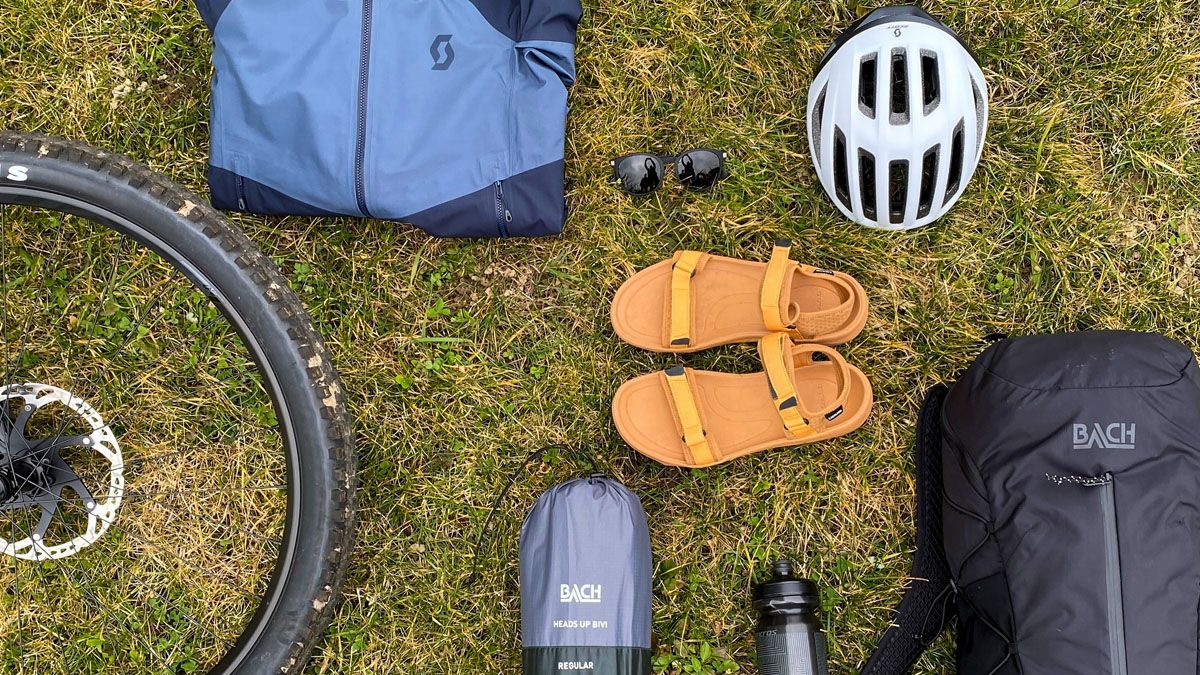Why Bikepacking Should Be Your 2023 Outdoor Adventure
Here’s your sign to get out on a two-wheeled adventure in 2023. According to Euronews, the rising number of us working from home has led to an increase in our desire to participate in more adventures within our holidays. We’re exploring more opportunities for a digital detox and restoring our connection with travel and the environment. “The new global environment leaves remote and hybrid workers craving movement this year, encouraging them to seek out more active holidays where they can combine exercise with nature immersion” reads its 2023 trend report.
Enter, Bikepacking. The expedition that allows you to travel with minimal impact on your surroundings and is increasingly accessible to try out. It’s no secret that spending more time outdoors has a positive effect on our mental and physical health. The combination of a full day in the fresh air, opening up the lungs and active movement from cycling through an abundant diversity of landscapes makes for a blissful break from the nine-to-five.
What Is Bikepacking?
Bikepacking is a great way to get outdoors and see the world. Often off-road tours, through idyllic destinations, with everything you need strapped to your bike frame. It brings together the best bits of mountain biking and long-distance hiking. Camping along the way allows you to be completely self-sufficient and free to journey at your own pace, whether your trip is just one day or an entire weekend. Imagine, riding through a day in the open air, taking on the climbs and switchbacks, then winding down in the evenings with stove cooked food and sleeping under the stars. Travelling by bike means you cover way more ground than by foot, allowing you to immerse yourself further into nature whilst actively taking on the challenge of varying terrain. A unique, outdoors adventure to try with friends, community or solo. Bikepacking can evoke a true sense of freedom. The quote ‘life is about the journey, not the destination’ comes to mind.
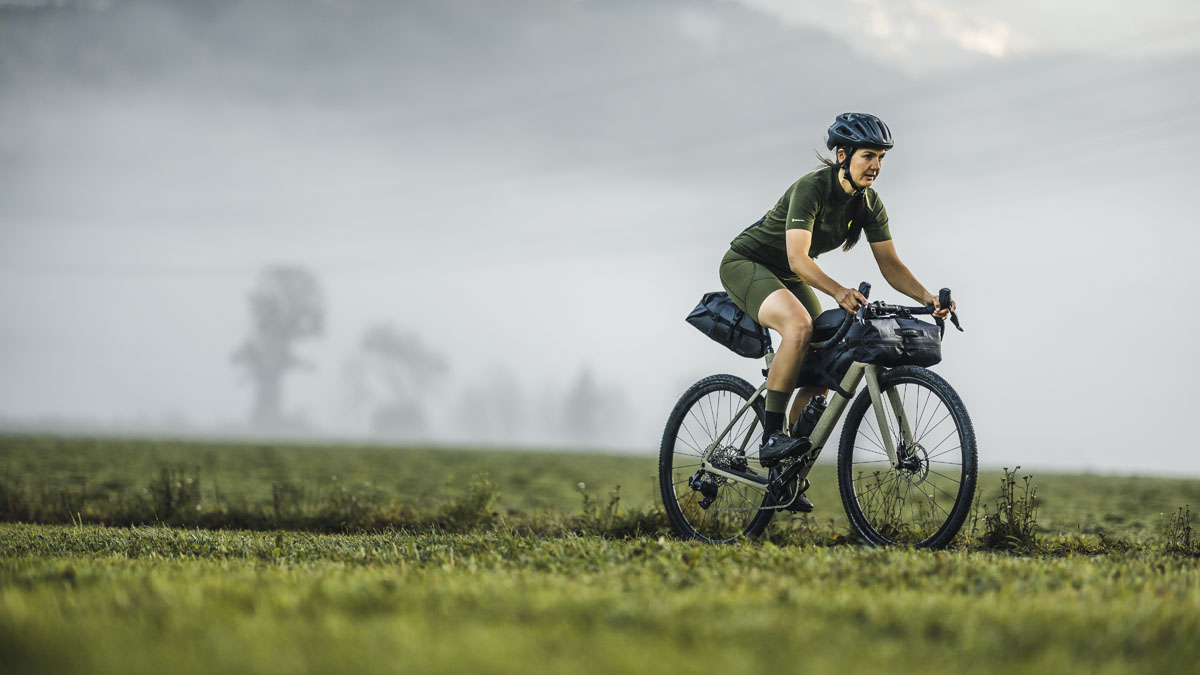
Take Less, Do More
Ok sounds awesome, so what do I need? Your kit will be determined by where you’re riding, considering weather, temperature. terrain etc. Depending on your trail may mean you follow dirt roads, forest or gravel tracks so having gear that can support you is essential. Having your kit strapped to your bike means overall weight and distribution need to be considered. You can carry more than in just a standard backpack but packing strategically is still a must. Less is more is definitely a mantra best to stick to when planning your trip, so choose your luxuries sparingly and prioritise versatility.
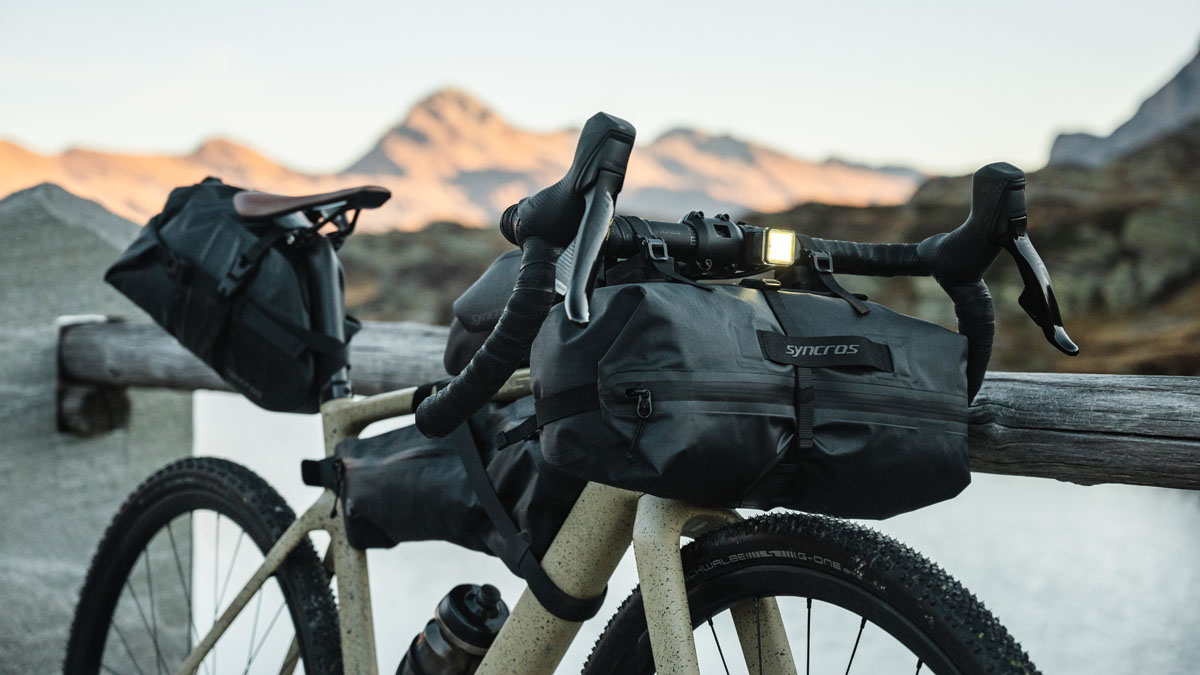
The Lightweight Clothing And Shoe Packing Challenge
So, lightweight and functional is the aim of the packing game. That includes your wearable gear. You’ll likely have two outfit scenarios; one for riding and one for around the camp and sleeping. For riding, you’ll want chamois shorts (your bum will thank you later) and a helmet, a lightweight shell jacket/gilet and weather depending, sunglasses,short gloves, waterproofs and a bandana for dust. Cycling shoes are a practical choice and you’ll benefit from off-road or mountain bike shoes if you’re venturing on any terrain rougher than smooth roads. That covers the basics.
For around the camp you might opt for warmer clothing and a pair of comfortable lightweight footwear options. The LIZARD TREK sandal is the perfect lightweight shoe for mixed terrain adventures and can keep up with you whilst you're on the move. This is both a sandal for women and sandals for men. The adjustable, spacer mesh straps allow for a secure yet comfortable fit and the guaranteed grip won’t let you down – perfect for when your feet need an off-pedal breather. These sandals come in at a super portable weight of approx. 400g for the pair (size dependant). Their versatility means they are the perfect bikepacking companions.
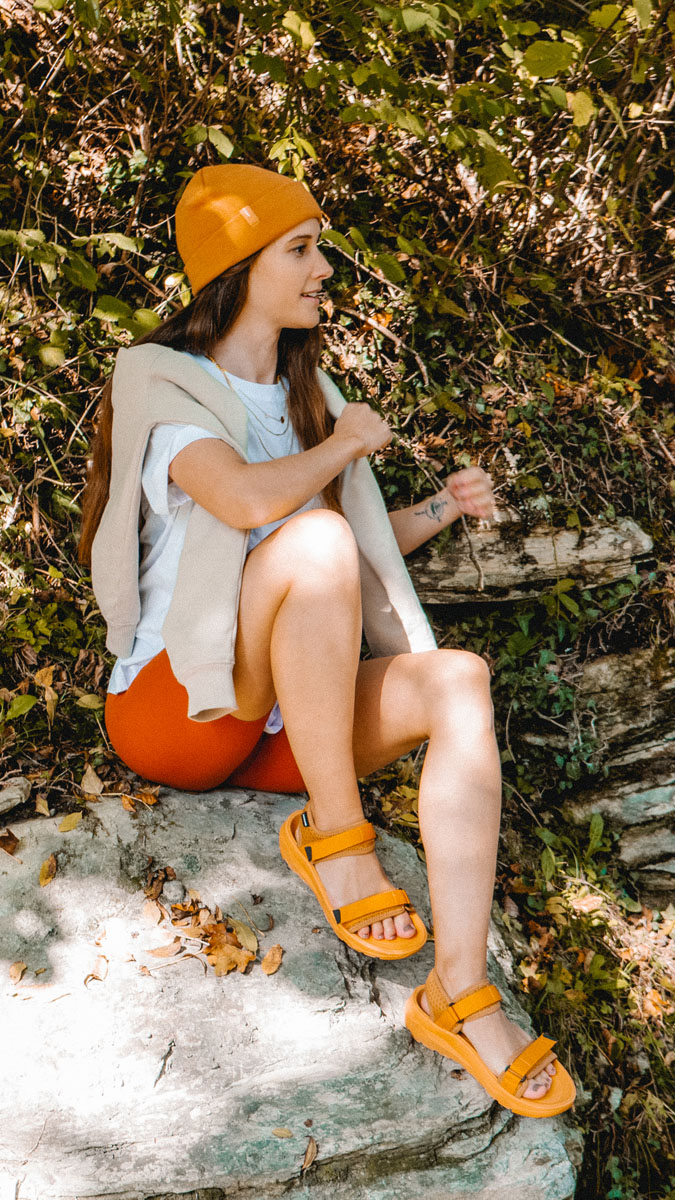
Choosing The Right Bike For You
There isn’t a specific bike built for bikepacking but commonly chosen are gravel bikes and mountain bikes. This is down to the versatility they offer in terms of the terrain they can handle and are generally capable of handling mixed surfaces. If your route switches between pavements and forest roads, for example. Features such as suspension, larger tires and frame material can make for a smoother ride but may add weight and expense so it may take a bit of testing to figure out your priorities. Depending on the adventure you want to take, the bike you have at home may already be suitable!! Hiring is a great option to try out different types o0f bikes and see how they suit your needs. If you choose to use your own bike, it’s worth getting it serviced to reduce the risk of repairs whilst on your trip. Similarly, it’s worth clueing up on some basic bike mechanics and packing an emergency repair kit. Hire companies often have a package option that includes teaching you the basics and sharing expert advice, great for first timers. Let's talk bike bags. These bike-specific soft bags are designed with the frame and rider in mind – so they are secure without adding too much weight. There are specific bags for the frame triangle, seat rails, handlebars and additional peripheral bags.
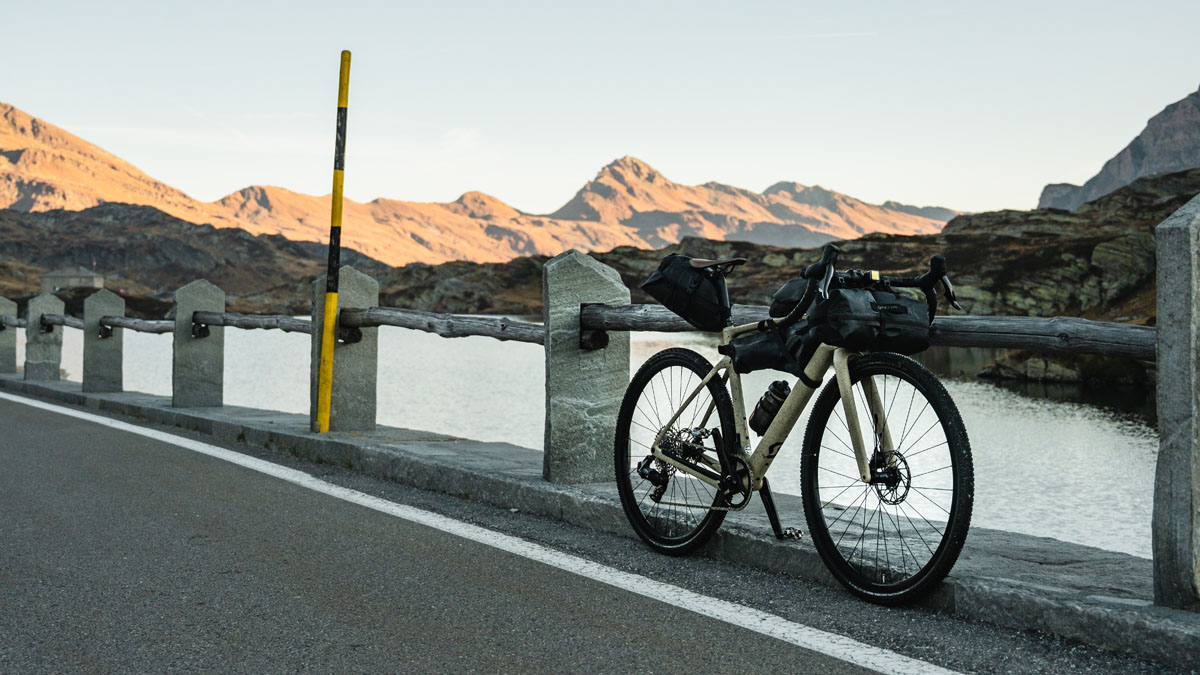
Camping Setup
Camping in the wilderness is an exciting component of the trip for a lot of prospective bikepackers but not an essential one. Stopping in at a hostel or B&B along the route invites the possibility of meeting people and the luxury of a cosy bed and hot shower. If you decide camping is for you, shelter options include a tent, bivvy or even a hammock – depending where in the world you are of course. Tents offer the most variety in size and you can get tiny ones that pack down to the size of a water bottle. Be sure to consider weather when selecting a tent and sleeping bag as rest and a good sleep will be highly valued after a full day of cycling! A roll mat will elevate you from the floor and adds a comfortable layer. Wild camping brings an immersive freedom to the trip, allowing you to feel entirely off-grid and self-sustaining. If you want to sleep wild, make sure you check out the local legalities and stay respectful of the environment you’re in.

Food Is Fuel
Food is fuel when it comes to such an active adventure and needn't be an afterthought. You can still have tasty, nutritious meals when bikepacking. A small gas or fuel stoves can be lightweight and compact, paired with a small pan will allow you to reheat food, hydrate dried food and boil water. Granola bars, nuts, trail mix and fruit are great high energy snack foods. Dried foods like pasta, noodles and rice are easily cooked up on the stove. Dried meals and soups store well in small spaces and are good to carry as backup meals. There are no rules on what food to take but practically, dried and high calorie ingredients suit this type of movement well. Just remember to bring plenty as you don’t want to go hungry! Longer journeys may require stops to stock up but you can plan for this when designing your route. A reusable cutlery set, mug and a bowl should meet all of your dining needs. Tip: keep any fresh or perishable food stored low in the bags to shelter from the direct warmth of sunlight. Water may be the most vital thing you carry on your bike and truthfully, the heaviest. Whilst the temptation may be to bring huge capacity containers for your water you may want to contemplate smaller containers and a considered route that factors in water sources, whether that be from nature (where you may require a filtration system) or rest stops in villages with shops and restaurants. Bottle cages are popular choices as they snap onto the frame with ease and are accessible; however this space may also be taken up with bike bags. Hydration bladders offer a large capacity and their flexible, efficient shape can be placed inside a bike bag or small rucksack worn by the rider.
Toiletries For Your Trip
Hygiene doesn’t need to go amiss just because you’re out in the wilderness. You can be minimal with the amount of toiletries you take and still feel fresh. Suncream, toothpaste, anti-chafe creams and soap will be the starting essentials followed with any extras you’d like to make for a more comfortable experience. Bring earth friendly products so as to not leave a trace or pollute the environment as you use them. A quick dry, compact towel should see you through a short trip. Toilet roll or biodegradable wipes need to be carried with you when used if you’re not near waste bins so pack some extra ziplock bags. Anti-microbial pee cloths are a reusable, waste free alternative for when nature calls. Similarly, pee funnels offer a squat free alternative and means less undressing!
Your Extra Kit
Extra items might include a torch or headlight, watch, camera, journal, cash/ID, first aid kit and other safety products. This is not an exhaustive list and you’ll need to research your destination to gather an extensive idea of what you’ll need. Trial and error may be your best friend when perfecting that packing list.
Where to go?
These cycling excursions can take you worldwide, with bikepacking communities and tours popping up globally. Route planning will be your first major step in designing your trip as it will naturally influence your packing and preparation. There are some amazing books and online resources that offer pre-planned routes depending on your desired terrain and difficulty. Check out the European Divide Trail, a route that spans from the shoreline of Norway to southern Portugal, an epicly huge venture that is perhaps not for beginners but an inspiring look into where bikepacking can take you. Consider time, region and weather when choosing your destination and talk to people! Humans are your greatest source of information so try connecting with fellow bikepackers for the local lowdown. Once you’ve got your route, you’ll want a way of navigating it whilst you’re out on the trail. The good old compass and map is one way but unless you’re well versed here, a GPS system is probably best. Bikemap is a popular choice for cyclists but there are many apps, just opt for one that allows you to download the GPS route to your phone so you’re not relying on having cellular signal when out in the wild.
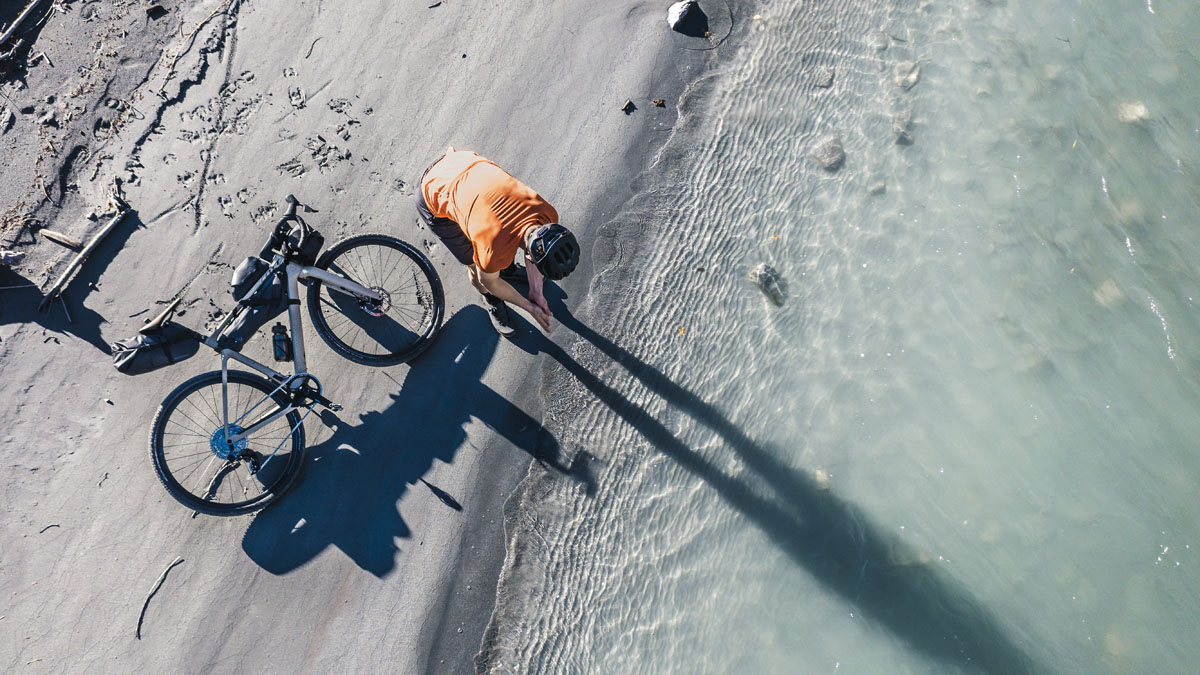
Riding Responsibly
The whole essence of bikepacking invites us to escape deeper into nature along the tracks less travelled. It’s important to consider the environment around you as you go and leave it as you found it, or better.
Low waste packing is a great place to start. Minimise the use of plastic food wrappers by opting for reusable containers and water bottles. Check out the LARQ UV self-cleaning water bottle, that allows you to drink water from streams and rivers due to the UV light in the lid that filters the water – great for avoiding plastic bottles. Carrying a reusable bag for trash keeps it separate from the rest of your luggage, keeping it handy to pick up any other bits you might find along your route.
Choosing your gear carefully can also help you be mindful of your environmental impact. Borrow bike equipment from friends or hire from a group if you’re just looking to give it a go. A bike can be a large financial investment so it’s good to try a few to get to know what you like. When buying new items, try and select good quality, well made products that are made with longevity at the forefront or with a regenerative focus. Comfort and versatility are key when it comes to clothes and shoes, so consider items that can handle the different terrains and weather you will be encountering. Such as the LIZARD TREK sandals for your quality, lightweight needs. Research the route and area you will be exploring thoroughly to familiarise yourself with local bylaws and restrictions. Wild camping laws are often evolving so it is important to check that you won’t be disturbing any wildlife or riding through protected areas. Sticking to a designated trail is a safe way to ensure you won’t be damaging the environment there and keeps you safe in unknown territory. Respecting the land should be at the forefront of bikepacking planning.
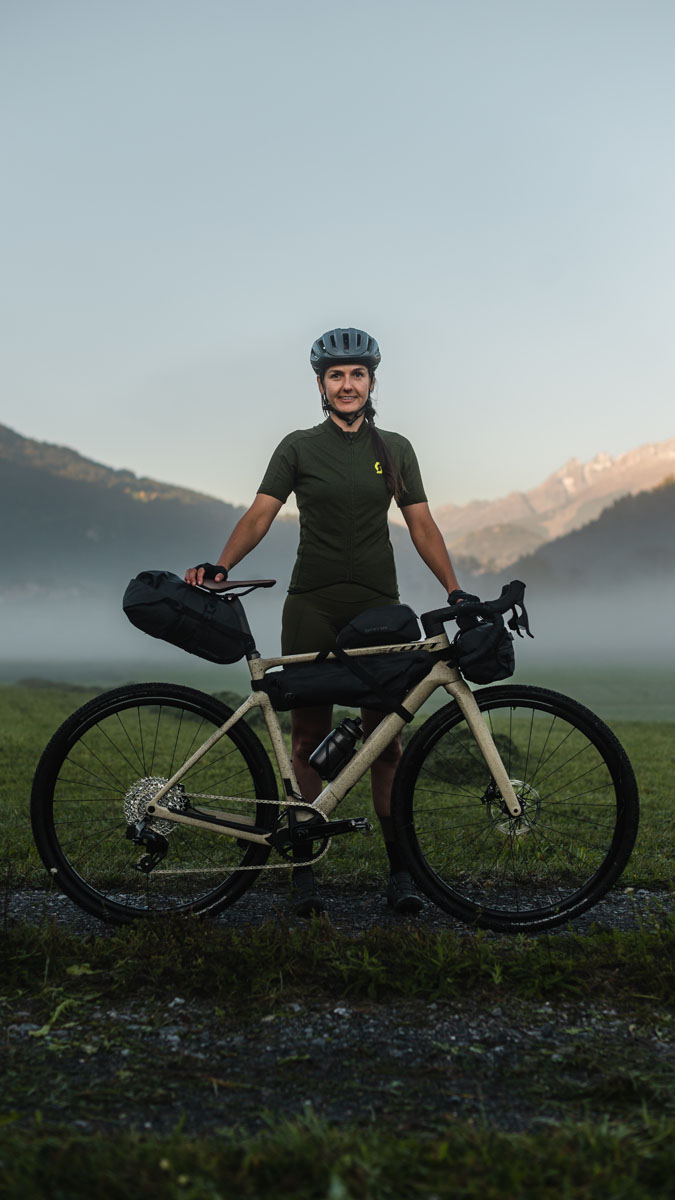
Join a crew
Want to gain confidence on the trails before venturing out solo? A quick google search will bring up lots of bikepacking groups, meetups and events for all levels, including opportunities to rent gear if you want to give it a go before investing yourself. Riding with experienced people also ensures safety out on the route. The rides can be more physically demanding than expected and having a guide can be useful for first aid and bike repairs.
One group breaking down barriers to the sport and creating community focused bikepacking events is Sisters in the Wild, a group who curate bike adventures for women, trans and non-binary people. Born from a desire to bring people together to create connections and build confidence, Sisters in the Wild events offer experiences for all levels in safe and supportive environments in European destinations.
We asked UK-division founder, Charlotte Inman, what the benefits are to joining a bikepacking crew.
“Bikepacking is a wonderful way to travel, especially when you’re able to choose routes that take you away from roads and into the wild. Everything slows to the pace that your legs can move your bike, and you feel everything you pass through, the air on your skin, the sounds and smells of the landscapes around you, and the people you meet along the way.
Finding a community or crew to share these experiences can be quietly life changing. The conversations that happen at 10mph, and the challenges and experiences you share on the journey can forge friendships and connections that go way beyond a bike ride. We love seeing people who join our events as nervous solo riders, leave with new adventure buddies, and go on to share incredible experiences and adventures together.”
Charlotte also told us about some of the epic travel plans SITW (UK) have coming up in 2023. Their annual gathering takes place in the Lake District, England and this year is bigger and better than before! They are also hosting a series of Intro to Bikepacking weekends across the UK, gravel camps in Scotland and the Canary Islands, as well as a couple of top-secret expeditions planned for the end of the year.
–
So, whether you choose to chase the flowing trails of the Swiss alps or weave through the volcanic landscapes of Lanzarote, it seems like bikepacking is one to add to the bucket list for 2023. These really are adventures for people who live life on the move.

